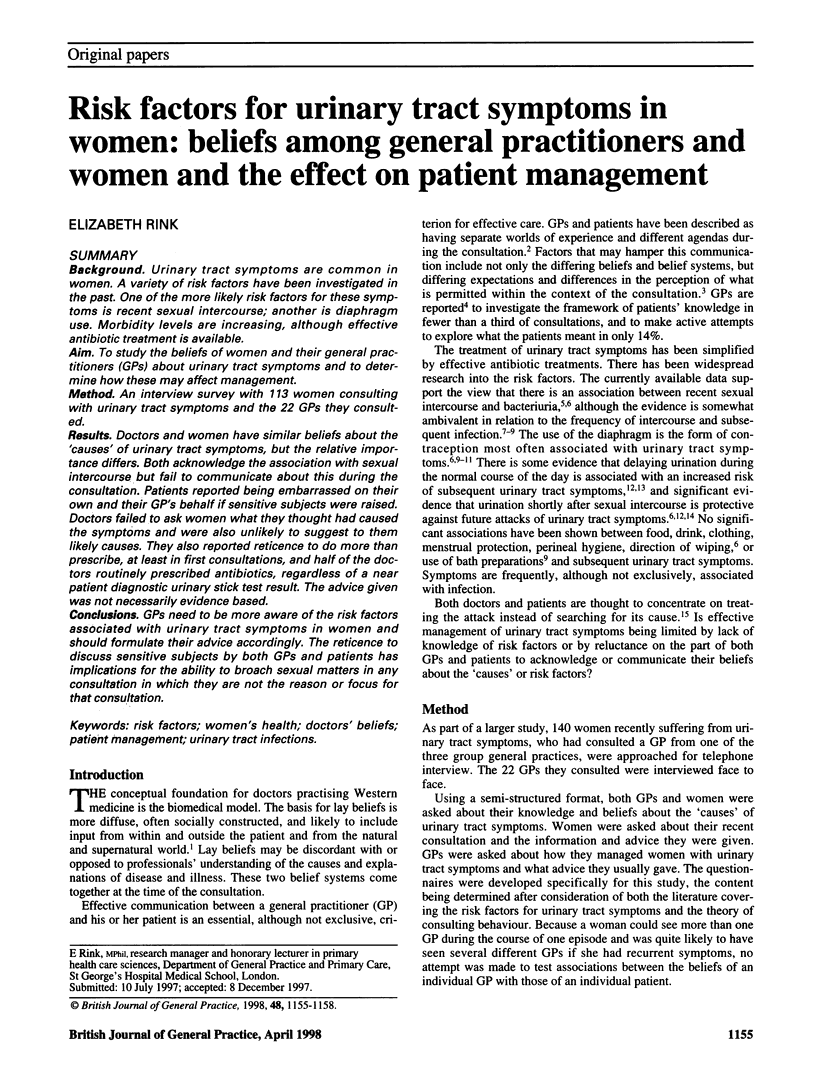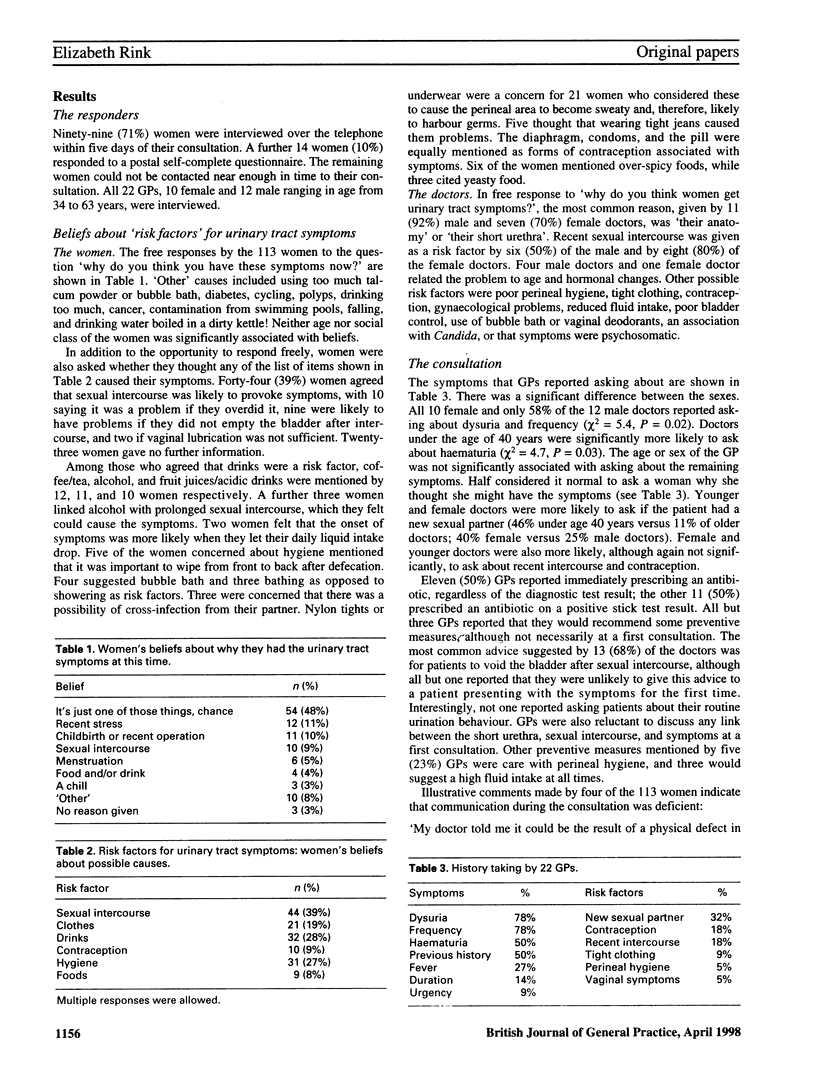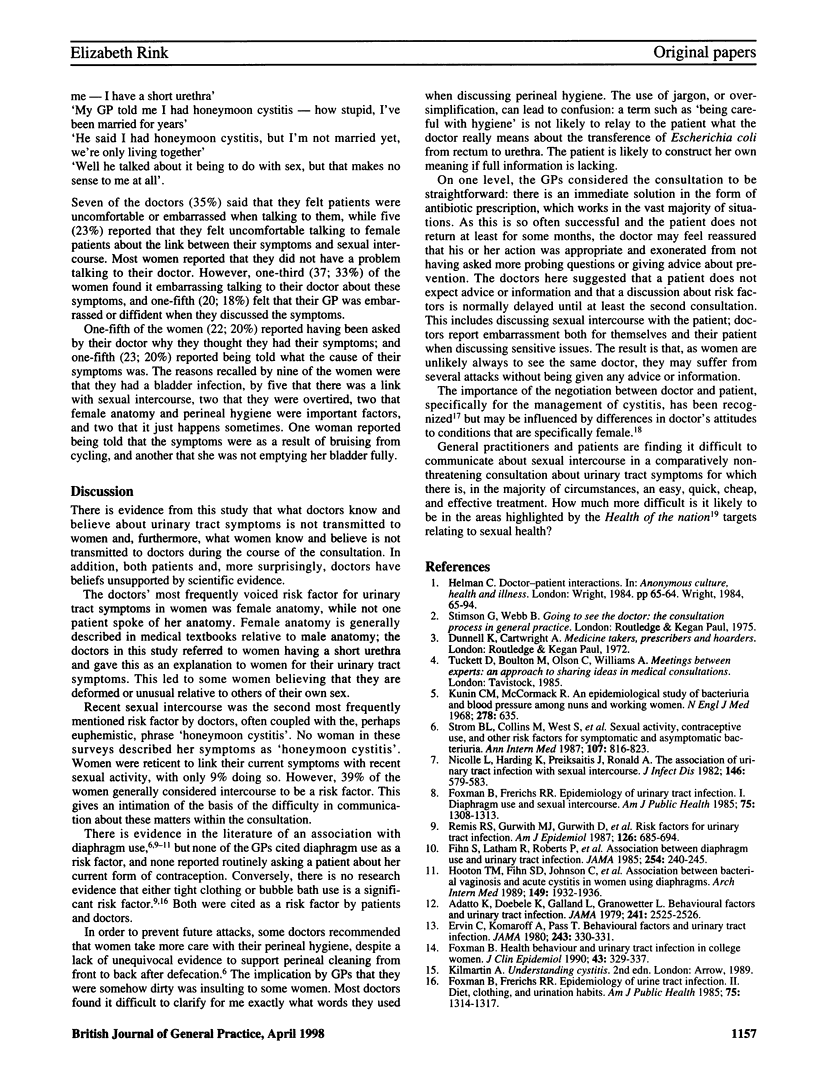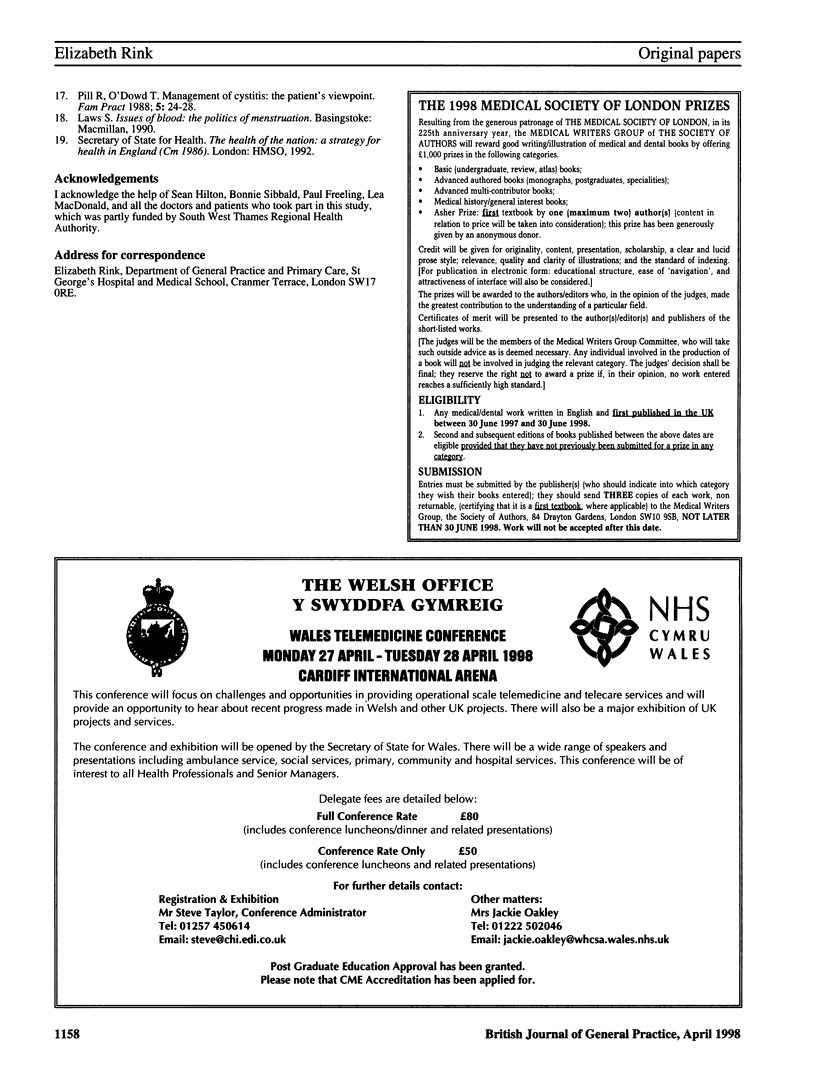Abstract
BACKGROUND: Urinary tract symptoms are common in women. A variety of risk factors have been investigated in the past. One of the more likely risk factors for these symptoms is recent sexual intercourse; another is diaphragm use. Morbidity levels are increasing, although effective antibiotic treatment is available. AIM: To study the beliefs of women and their general practitioners (GPs) about urinary tract symptoms and to determine how these may affect management. METHOD: An interview survey with 113 women consulting with urinary tract symptoms and the 22 GPs they consulted. RESULTS: Doctors and women have similar beliefs about the 'causes' of urinary tract symptoms, but the relative importance differs. Both acknowledge the association with sexual intercourse but fail to communicate about this during the consultation. Patients reported being embarrassed on their own and their GP's behalf if sensitive subjects were raised. Doctors failed to ask women what they thought had caused the symptoms and were also unlikely to suggest to them likely causes. They also reported reticence to do more than prescribe, at least in first consultations, and half of the doctors routinely prescribed antibiotics, regardless of a near patient diagnostic urinary stick test result. The advice given was not necessarily evidence based. CONCLUSIONS: GPs need to be more aware of the risk factors associated with urinary tract symptoms in women and should formulate their advice accordingly. The reticence to discuss sensitive subjects by both GPs and patients has implications for the ability to broach sexual matters in any consultation in which they are not the reason or focus for that consultation.
Full text
PDF



Selected References
These references are in PubMed. This may not be the complete list of references from this article.
- Adatto K., Doebele K. G., Galland L., Granowetter L. Behavioral factors and urinary tract infection. JAMA. 1979 Jun 8;241(23):2525–2526. [PubMed] [Google Scholar]
- Ervin C., Komaroff A. L., Pass T. M. Behavioral factors and urinary tract infection. JAMA. 1980 Jan 25;243(4):330–331. [PubMed] [Google Scholar]
- Fihn S. D., Latham R. H., Roberts P., Running K., Stamm W. E. Association between diaphragm use and urinary tract infection. JAMA. 1985 Jul 12;254(2):240–245. [PubMed] [Google Scholar]
- Foxman B., Chi J. W. Health behavior and urinary tract infection in college-aged women. J Clin Epidemiol. 1990;43(4):329–337. doi: 10.1016/0895-4356(90)90119-a. [DOI] [PubMed] [Google Scholar]
- Foxman B., Frerichs R. R. Epidemiology of urinary tract infection: I. Diaphragm use and sexual intercourse. Am J Public Health. 1985 Nov;75(11):1308–1313. doi: 10.2105/ajph.75.11.1308. [DOI] [PMC free article] [PubMed] [Google Scholar]
- Foxman B., Frerichs R. R. Epidemiology of urinary tract infection: II. Diet, clothing, and urination habits. Am J Public Health. 1985 Nov;75(11):1314–1317. doi: 10.2105/ajph.75.11.1314. [DOI] [PMC free article] [PubMed] [Google Scholar]
- Hooton T. M., Fihn S. D., Johnson C., Roberts P. L., Stamm W. E. Association between bacterial vaginosis and acute cystitis in women using diaphragms. Arch Intern Med. 1989 Sep;149(9):1932–1936. [PubMed] [Google Scholar]
- Kunin C. M., McCormack R. C. An epidemiologic study of bacteriuria and blood pressure among nuns and working women. N Engl J Med. 1968 Mar 21;278(12):635–642. doi: 10.1056/NEJM196803212781201. [DOI] [PubMed] [Google Scholar]
- Nicolle L. E., Harding G. K., Preiksaitis J., Ronald A. R. The association of urinary tract infection with sexual intercourse. J Infect Dis. 1982 Nov;146(5):579–583. doi: 10.1093/infdis/146.5.579. [DOI] [PubMed] [Google Scholar]
- Pill R., O'Dowd T. C. Management of cystitis: the patient's viewpoint. Fam Pract. 1988 Mar;5(1):24–28. doi: 10.1093/fampra/5.1.24. [DOI] [PubMed] [Google Scholar]
- Remis R. S., Gurwith M. J., Gurwith D., Hargrett-Bean N. T., Layde P. M. Risk factors for urinary tract infection. Am J Epidemiol. 1987 Oct;126(4):685–694. doi: 10.1093/oxfordjournals.aje.a114708. [DOI] [PubMed] [Google Scholar]
- Strom B. L., Collins M., West S. L., Kreisberg J., Weller S. Sexual activity, contraceptive use, and other risk factors for symptomatic and asymptomatic bacteriuria. A case-control study. Ann Intern Med. 1987 Dec;107(6):816–823. doi: 10.7326/0003-4819-107-6-816. [DOI] [PubMed] [Google Scholar]


